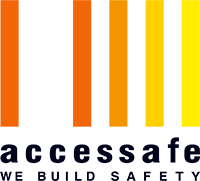The user and maintenance manual is the most substantial and most relevant part of the machinery Instruction manual.
The manual provides detailed information regarding:
- the designation of the machine
- the entire machine life cycle: transport, assembly, installation, putting into service, use, dismantling and disposal, as described in the UNI EN ISO 12100 standard
The user and maintenance manual must be made available and consultable by all the people who interface with the machine.
The user and maintenance manual is strictly related to the Risk Assessment; indeed, the manual must report:
- the hazards identified during the assessment
- applied risk reduction
- residual risks
It is essential to report inside the manual the designation of the machine; i.e. define the characteristics of both the materials and processes for which the machinery has been designed.
Here below is an extract regarding the minimum required contents for a machinery instruction manual, as specified at point 1.7.4.2 of annex I of the Machinery Directive 2006/42/CE.
Each instruction manual must contain at least the following information:
- the business name and full address of the manufacturer and of his authorised representative;
- the designation of the machinery as marked on the machinery itself, except for the serial number;
- the EC declaration of conformity, or a document setting out the contents of the EC declaration of conformity, showing the particulars of the machinery, not necessarily including the serial number and the signature;
- a general description of the machinery;
- the drawings, diagrams, descriptions and explanations necessary for the use, maintenance and repair of the machinery and for checking its correct functioning;
- a description of the workstation(s) likely to be occupied by operators;
- a description of the intended use of the machinery;
- warnings concerning ways in which the machinery must not be used that experience has shown might occur;
- assembly, installation and connection instructions, including drawings, diagrams and the means of attachment and the designation of the chassis or installation on which the machinery is to be mounted;
- instructions relating to installation and assembly for reducing noise or vibration;
- instructions for the putting into service and use of the machinery and, if necessary, instructions for the training of operators;
- information about the residual risks that remain despite the inherent safe design measures, safeguarding and complementary protective measures adopted;
- instructions on the protective measures to be taken by the user, including, where appropriate, the personal protective equipment to be provided;
- the essential characteristics of tools which may be fitted to the machinery;
- the conditions in which the machinery meets the requirement of stability during use, transportation, assembly, dismantling when out of service, testing or foreseeable breakdowns;
- instructions with a view to ensuring that transport, handling and storage operations can be made safely, giving the mass of the machinery and of its various parts where these are regularly to be transported separately;
- the operating method to be followed in the event of accident or breakdown; if a blockage is likely to occur, the operating method to be followed so as to enable the equipment to be safely unblocked;
- the description of the adjustment and maintenance operations that should be carried out by the user and the preventive maintenance measures that should be observed;
- instructions designed to enable adjustment and maintenance to be carried out safely, including the protective measures that should be taken during these operations;
- the specifications of the spare parts to be used, when these affect the health and safety of operators;
- information on airborne noise emissions;
- where machinery is likely to emit non-ionising radiation which may cause harm to persons, in particular persons with active or non-active implantable medical devices, information concerning the radiation emitted for the operator and exposed persons.
- In relation to these requirements, other documents can be useful to define the content of the user instruction manual, for example the UNI EN ISO 12100:2010 standard.
Respect of these requirements is of essential importance in order to provide all the necessary information regarding the use of the machinery and the existing risks, as identified in the risk assessment.
We’d like to remind you that the manual, along with other sources of information, forms a part of the risk reduction measures, as set out in the ISO 12100 standard.
USE AND MAINTENANCE MANUAL – GENERAL REQUIREMENTS
Here below is the list of requirements set out at point 1.7.4.1 of annex I of the machinery Directive
- The instructions must be drafted in one or more official Community languages.
- Instructions in the original must be made available along with their translations. If it is necessary to publish the instructions in a different language from the original version, a copy of the latter must be attached.
- The contents of the instructions must cover not only the intended use of the machinery but also take into account any reasonably foreseeable misuse thereof.
- It must be written using understandable and standardized words, technical terminology must be easily recognisable and should if be necessary explanation should be provided.
These are only a few useful suggestions for drafting a User and Maintenance Manual.
Indeed, refer to the ISO 20607 standard: Instruction Manual – General principles for drafting to gain a wider and more in-depth picture on the issue.


